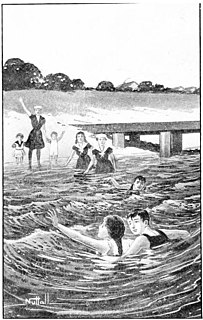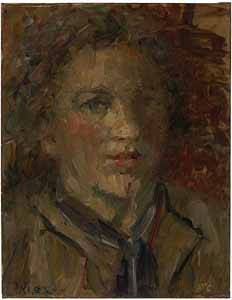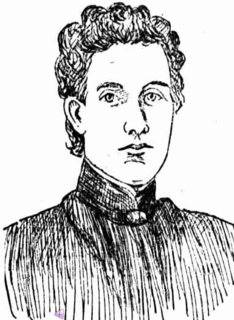Minnie Pwerle was an Australian Aboriginal artist. She came from Utopia, Northern Territory, a cattle station in the Sandover area of Central Australia 300 kilometres (190 mi) northeast of Alice Springs.

Charles Nuttall was an Australian artist noted for his illustrations.
Jamil Yamani is a video artist working within the areas of migration, cultural identity, borders and diaspora.

Makinti Napanangka was a Pintupi-speaking Indigenous Australian artist from Australia's Western Desert region. She was referred to posthumously as Kumentje. The term Kumentje was used instead of her personal name as it is customary among many indigenous communities not to refer to deceased people by their original given names for some time after their deaths. She lived in the communities of Haasts Bluff, Papunya, and later at Kintore, about 50 kilometres (31 mi) north-east of the Lake MacDonald region where she was born, on the border of the Northern Territory and Western Australia.
Contemporary Indigenous Australian art is the modern art work produced by Indigenous Australians, that is, Aboriginal Australians and Torres Strait Islander people. It is generally regarded as beginning in 1971 with a painting movement that started at Papunya, northwest of Alice Springs, Northern Territory, involving Aboriginal artists such as Clifford Possum Tjapaltjarri and Kaapa Tjampitjinpa, and facilitated by white Australian teacher and art worker Geoffrey Bardon. The movement spawned widespread interest across rural and remote Aboriginal Australia in creating art, while contemporary Indigenous art of a different nature also emerged in urban centres; together they have become central to Australian art. Indigenous art centres have fostered the emergence of the contemporary art movement, and as of 2010 were estimated to represent over 5000 artists, mostly in Australia's north and west.
Vivien Joan Johnson is an Australian sociologist, writer on Indigenous Australian art, and former editor-in-chief of the Dictionary of Australian Artists Online.
Kaapa Mbitjana Tjampitjinpa was a contemporary Indigenous Australian artist of Anmatyerre, Warlpiri and Arrernte heritage. One of the earliest and most significant artists at Papunya in Australia's Northern Territory in the early 1970s, he was a founding member and inaugural chairman of the Papunya Tula artists company, and pivotal to the establishment of modern Indigenous Australian painting.

Kathleen Laetitia "Kate" O'Connor was an impressionist painter with a career in Western Australia and France. She was a daughter of the celebrated engineer C. Y. O'Connor.
Richard Goodwin is an Australian artist, architect and professor of Fine Arts and Design at the University of New South Wales School of Art and Design.

Florence Ada Fuller was a South African-born Australian artist. Originally from Port Elizabeth, Fuller migrated as a child to Melbourne with her family. There she trained with her uncle Robert Hawker Dowling and teacher Jane Sutherland and took classes at the National Gallery of Victoria Art School, becoming a professional artist in the late 1880s. In 1892 she left Australia, travelling first to South Africa, where she met and painted for Cecil Rhodes, and then on to Europe. She lived and studied there for the subsequent decade, except for a return to South Africa in 1899 to paint a portrait of Rhodes. Between 1895 and 1904 her works were exhibited at the Paris Salon and London's Royal Academy.

The Melbourne Society of Women Painters and Sculptors, established in Melbourne, Victoria in 1902, is the oldest surviving women's art group in Australia.
Debra Phillips is an Australian artist. Her main practice is photography but she also works across other forms such as sculpture and moving image. She has been an exhibiting artist since the 1980s, is a part of many collections, and has won multiple awards for her work. Phillips resides in Sydney and is a senior lecturer at The College of Fine Arts, University of New South Wales.
Joan Kerr (1938–2004) was an Australian academic and cultural preservationist. Initially her interest was sparked in preserving the architectural heritage of Australia, but over time her interests spread to art history and Australian culture in general. She taught at many universities throughout the country and was involved in Historical Societies and Preservation Trusts in a variety of the territories. She wrote books on Australia's historic architecture, feminist artists, cartoonists and her major life work was producing the Dictionary of Australian Artists: Painters, Sketchers, Photographers and Engravers to 1870.

Carl Olaf Plate was a prominent Australian modernist painter and collage artist.

Mary Edwell-Burke (1894–1988), was an Australian painter and carver.
Bernice E. Edwell (1880–1962), was an Australian painter specializing in miniatures. She was a founding member of the Sydney Society of Women Painters and the Twenty Melbourne Painters.
Brenda L Croft is an Aboriginal Australian artist, curator, writer, and educator working across contemporary Indigenous and mainstream arts and cultural sectors. Croft was a founding member of the Boomalli Aboriginal Artists Cooperative in 1987.
Normana Wight is an Australian artist, best known as a painter and printmaker.
Nerine Martini, was an Australian artist working in the fields of sculpture, installation, drawing, socially engaged art and public art.
Olive Ashworth was an Australian artist, textile designer and photographer.






